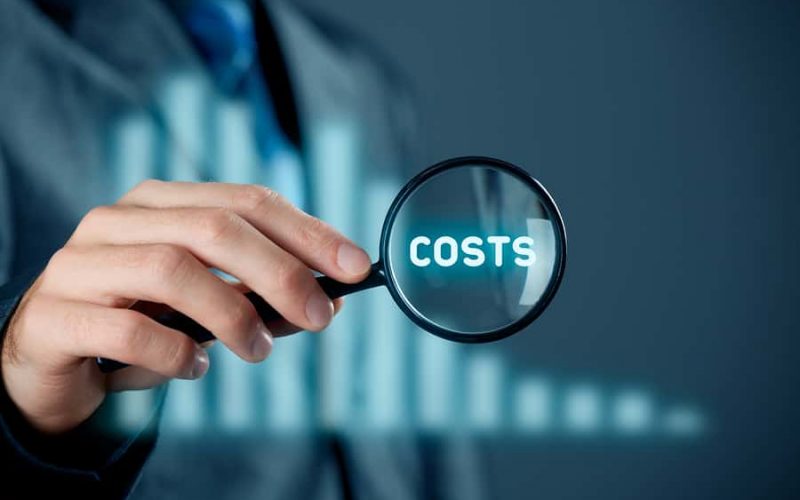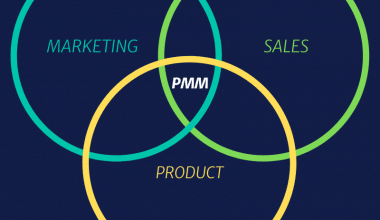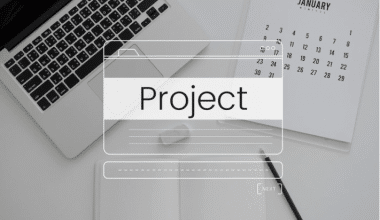Organizations want their projects to be successful and to meet both client expectations and internal goals. But what is the actual situation? According to a PMI analysis, 14 percent of the IT projects examined were rated a failure. Only 57% of the projects were completed within their initial budgets, with the remainder exceeding the target they had set for themselves.
This is undoubtedly bad news for businesses, as cost overruns not only reduce their margins but also limit their ability to execute future projects. Understanding project cost management and how to be effective at it can help firms stay on track.
In this post, we will define project cost management, discuss its merits, and go over the stages required in creating a cost management plan. Also, we’ll also see an example of project cost management and go over the need for software in the management.
Project Cost Management
The practice of estimating, planning, and controlling costs throughout the project life cycle with the goal of keeping expenditures within the agreed budget is known as project cost management.
For a project to be considered successful, it is necessary that:
- It meets the requirements and scope.
- Its execution quality is excellent.
- It was completed on time, and
- It was constructed on time and within budget.
As a result, project cost management is one of the most important pillars of project management and is applicable regardless of the area, such as manufacturing, retail, technology, or construction. It aids in the development of a financial baseline against which project managers may assess the current status of their project costs and, if necessary, realign the direction.
What Is the Importance of Project Cost Management?
The significance of cost management is obvious. To give an example of project cost management from real life, if you decide to build a house, the first step is to determine your budget. When you know how much you want to spend on the project, the following step is to break down the overall budget into expenses for sub-tasks and smaller line items.
The budget will determine critical decision points such as: which designer to hire—a high-end one who will construct and deliver the project from start to finish, or someone who can assist with a few elements and work on a smaller budget? How many stories should the house have? What material quality should be used?
Without a budget, not only is it difficult to answer these concerns, but it is also impossible to determine whether you are on the correct track once the project is started. The scope of this problem is amplified in large organizations due to the concurrent operation of several projects, changes in initial assumptions, and the addition of unanticipated expenditures. This is where cost management might come in handy.
- Project managers can save management by using effective cost-cutting measures.
- Establish clear expectations with stakeholders.
- Control scope creeps as a result of customer transparency.
- Track progress and take corrective action as soon as possible.
- Maintain planned margins, boost ROI, and avoid project losses.
- Create data to use as a standard for future projects and to track long-term cost trends.
What is the Cost of a Project?
The overall amount of money required to execute a project or piece of work is referred to as the Project Cost, which includes both direct and indirect costs.
Project Cost Management Plan
A project cost management plan is a strategy for planning and executing a project’s budget. Of course, this is done to ensure that your project is completed on time and within budget. However, if you do not have a comprehensive project cost management plan in place, both of those things will fail, costing you and your organization a lot of money.
How Do You Make a Project Cost Management Plan?
Cost management is sometimes known by more precise sub-task names such as spend management, cost transparency, and cost accounting. It usually consists of four processes: resource planning, cost estimation, budgeting, and cost control.
#1. Project Resource Planning
The process of identifying the resources needed to execute and complete a project is known as resource planning. People (such as employees and contractors) and equipment are examples of resources (such as infrastructure, large construction vehicles, and other specialized equipment in limited supply).
Before any actual work begins, resource planning is completed at the start of a project.
To get started, project managers must first prepare the work-breakdown structure (WBS). They must examine each subtask in the WBS and ask how many people, what kind of abilities, and what kind of equipment or material are required to complete this task.
Here are a few pointers to keep in mind as you go through the process:
- Before determining sub-tasks and the related resources, consider historical data—past timelines and effort.
- Consider feedback from SMEs and team members—a collaborative approach works effectively, especially in projects that lack historical data.
- Examine the effect of time on resource requirements. For example, a resource may not be available for several months, causing the project’s timeline to slip. This may have an effect on cost estimates.
Despite the fact that this step occurs during the planning stage, project managers must account for ground realities. For example, you may discover a requirement for a resource with specific expertise; but, if such a resource is not accessible within the organization, you must consider hiring a contractor or training your staff to bring them up to speed. All of these real-world elements have an impact on cost management.
#2. Cost Estimation
The process of calculating the expenses associated with all of the resources required to complete the project is known as cost estimation. We require the following information to do cost calculations:
- Resources required (output from the previous step)
- The cost of each resource (e.g., staffing cost per hour, vendor hiring costs, server procurement costs, material rates per unit, etc.)
- The time frame for which each resource is required
- Assumptions list
- Risks that may exist
- Previous project expenses and, if applicable, industry benchmarks
- Insight into the financial health and reporting structures of the company
Estimation is likely the most difficult step in cost management because accuracy is critical. Project managers must also consider fixed and variable expenses, overheads, inflation, and the time value of money.
The bigger the difference between estimated and actual expenses, the less likely a project is to succeed. There are, however, numerous estimating models to choose from. If you have a lot of past cost data from similar projects, analogous estimating is a useful option. Some businesses prefer mathematical methodologies such as parametric modeling or the program evaluation and review technique (PERT).
Then there’s the question of whether to go top-down or bottom-up. When past costing data is available, top-down pricing works well. In this case, project managers typically have prior experience with similar projects and can thus make an informed decision. Bottom-up works well for projects in which organizations lack experience, and it makes sense to calculate a cost estimate at the task level and then roll it up to the top.
Cost Estimation as a Decision Support Tool
In many cases, project management teams develop multiple solutions for a project, and cost estimation aids them in deciding which path to take. There are numerous costing methodologies available to aid in this comparative analysis, including activity-based costing, job costing, and lifecycle costing.
For example, lifecycle costing takes into account a project’s entire end-to-end lifecycle. Maintenance costs, for example, are frequently overlooked in IT projects, but lifecycle costing considers the long term and accounts for resource usage until the cycle’s end. Similarly, the goal of manufacturing projects is to reduce future service and replacement costs.
The estimation process can sometimes be used by teams to evaluate and reduce costs. Value engineering in project management, for example, aids in obtaining the most out of a project while reducing the cost.
#3. Cost Budgeting
Cost budgeting can be viewed as an extension of estimation or as a distinct process in its own right. Budgeting is the process of allocating costs to a specific portion of a project, such as individual tasks or modules, over a set period of time. Budgets include contingency reserves that are set aside to deal with unexpected expenses.
Assume the total costs for a three-year project are $2 million. However, because budget allocation is time-based, the project manager decides to focus on the first two quarters for the time being. They identify the work items that must be completed and budget, say, $35,000 for this time period and these work items. To arrive at this figure, the project manager employs the work breakdown structure (WBS) and some of the estimation methods discussed in the preceding section.
Budgeting establishes a cost baseline against which the project’s cost performance can be measured and evaluated in the future. Without the budget, the total estimated cost would be an amorphous figure that would be difficult to quantify halfway. The evaluation of project performance allows you to determine how much budget is required for future phases of the project.
Another reason to tighten budgets is that organizations frequently rely on anticipated future cash flows to fund themselves. The project manager has a limited financial pool during the initial phases and must set goals accordingly. It’s like starting with the foundation and one floor of a house and then finishing the rest of the project as you save more money.
#4. Cost Control
Cost control is the process of measuring cost variances from the baseline and taking appropriate action to close that gap, such as increasing the budget allocated or reducing the scope of work. It is an ongoing process that occurs throughout the lifecycle of a project. The emphasis here is on both measuring and timely and clear reporting.
The cost management plan, along with the cost baseline, is a critical input for cost control. This plan includes details such as how project performance will be measured, what the deviation threshold is, what actions will be taken if the threshold is breached, and a list of people and roles with executive decision-making authority.
Earned value management (EVM) is a popular method of measuring cost performance. As an example of project cost management, consider the following:
Example
You measure the progress of task X at the end of the week and discover that it is 25% complete. How do you know if you’re on track to complete the task within the budget?
First, a project manager determines the task’s estimated value (at the planning stage). Assume Task X has a $4000 budget and is expected to be half-completed by the end of the week.
Task X’s planned value (PV) by week = $4000 *.5 = $2000
Earned value (EV) of task X divided by the number of weeks = $4000 *.25 = $1000
You must now calculate the actual cost (AC) of the work, which includes additional variables such as equipment and material costs (for example, $800).
EV – PV = $1000 – $2000 = -$1000.
EV – AC = $1000 – $800 = $200 cost variance
The negative schedule variance indicates that the task is running behind schedule, but the positive cost variance indicates that it is running under budget.
When dealing with hundreds of tasks in large projects, cost control can provide the transparency that decision-makers need to respond quickly to the situation.
Software for Project Cost Management
Cost management, like other aspects of project management, becomes complicated when there are numerous variables at play. The procedure itself is complex, necessitating meticulous attention to detail as well as a strict approach. This process can be greatly aided by the use of project cost management software.
Let us take a look at some of the benefits of using project cost management software:
- The automation of time-consuming quantitative analysis during estimation and measurement aids in the reduction of human error.
- Data integration across planning, estimation, budgeting, and control enables continuous monitoring and prompt, proactive responses rather than one-time interventions.
- Decision-making is aided by project cost management software, which uses scenario forecasting and what-if analysis to evaluate alternative solutions.
- Dashboards and other rich UIs provide simple and straightforward reporting.
- Project cost management software reduces the complexity of multicurrency management in projects spread across multiple geographic locations.
- Many projects costing solutions support third-party integrations, allowing data to be gathered and analyzed.
- With the availability of performance data from multiple projects, benchmarking and standardization are feasible.
Cost Control and the Performance of Large-Scale Projects
According to the 2018 PMI Pulse of the Profession Report, 41% of respondents said their projects are complex. It comes as no surprise, then, that 40% of survey respondents rank “investing in technology to better enable project success” as their top priority.
Cost management is inextricably linked to an organization’s ability to complete current and future projects successfully. Investing in dependable cost management software can yield significant savings. A good cost management solution will not treat it as a separate function, but will leverage it as an essential component of project and portfolio performance, and will correlate data across projects.
What Are The Advantages of Cost Management in a Project?
The business benefits of efficient cost management should not be overlooked by project managers. Some of these benefits are as follows;
#1. It Fosters Future Plans
The project cost management help in preparing future budgets by maximizing the report of the previous resource to build accuracy.
#2. Helps In Avoiding Risk
It usually includes a risk allowance to guarantee that the project’s success is not jeopardized by unanticipated costs.
#3. Guard Against Cost Overrun
It enables project managers to apportion costs this limits overspending. By allocating costs to the project, managers can avoid overspending in the long run.
What are the Common Inclusions in the Cost Management Plan?
A Cost Management Plan is a document that outlines the criteria and tasks that must be completed as part of project management. A Cost Management Plan includes both input cost estimates, the amount of money that will be spent, cost output projections, or the amount of money received.
What is the First Step in Project Cost Management?
The first phase of cost management entails defining the resources needed to complete all project tasks.
What are the Four Types of Cost?
The four major types of costs are:
- Direct
- Indirect
- Fixed, and variable cost.
- FINANCIAL RESOURCES: 7 Best Sources to look out for in 2023 (+ Detailed Guide)
- Project Milestones Management: Detailed Guide with Examples
- What is Project Risk Management? Steps in Creating a Risk Assessment Plan
- Project Scope Management: Definition & Scope Management Plan Examples
- PROJECT FINANCE: Simple Guide to Kick start any Project(+ best picks)






